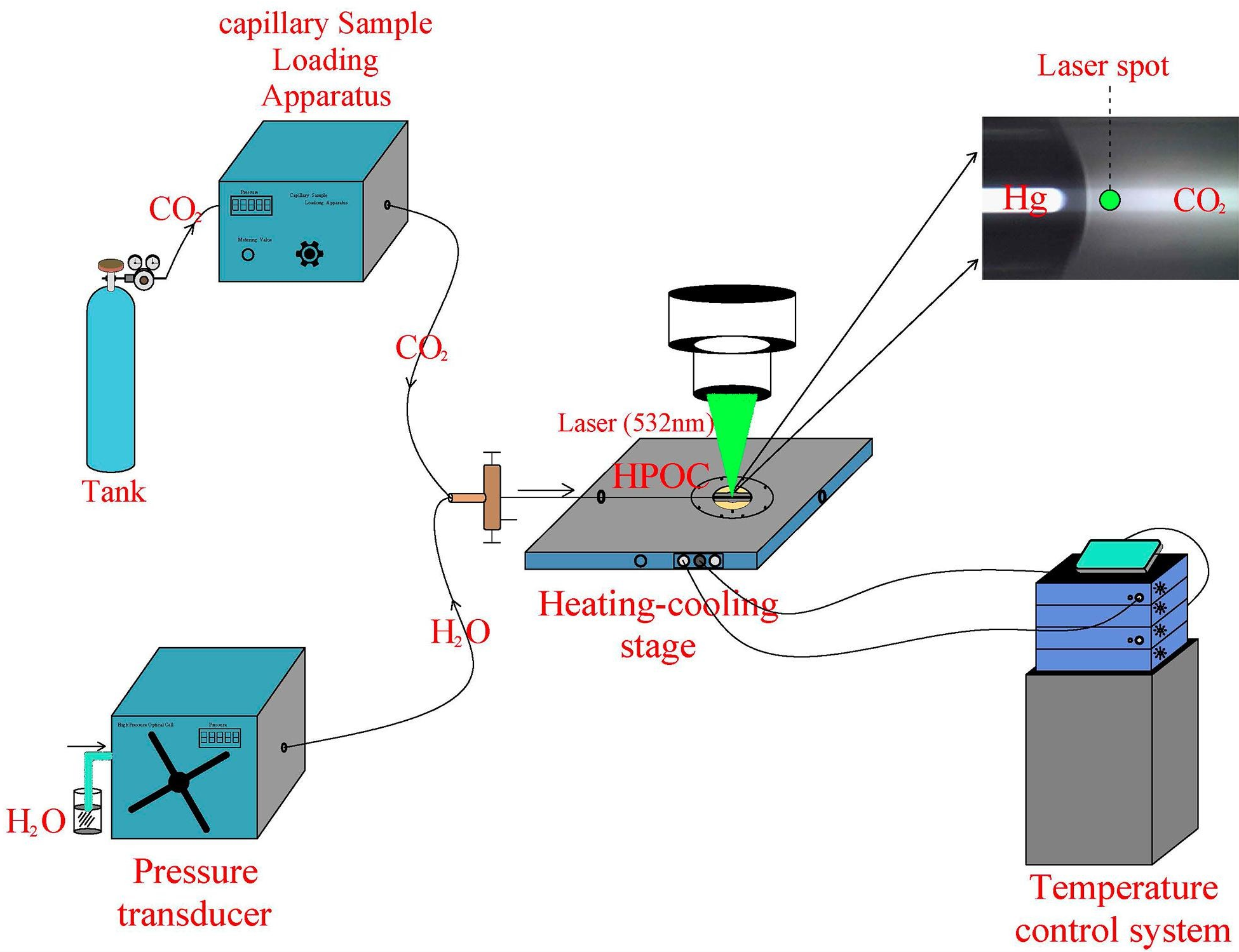Quantification of carbon isotopic composition (δ13C) of CO2 can trace the source of carbon, which is significant for studying the evolution process of geological fluids, constraining the global carbon budget, and clarifying the mechanism of biological metabolism.
At present, the commonly used isotope measurement technology (mass spectrometry) requires long-time sample pretreatment before testing, resulting in low detection efficiency. In addition, due to the limitation of testing conditions, it cannot be directly applied to in-situ detection in high-temperature and high-pressure environments.
Recently, a research team led by Prof. ZHANG Xin from the Institute of Oceanology of the Chinese Academy of Sciences (IOCAS) reported a rapid in-situ quantitative analysis method for determining the carbon isotopic composition of CO2 using Raman spectroscopy.
The study was published in Spectrochimica Acta Part A: Molecular and Biomolecular Spectroscopy on Mar. 23.
The researchers constructed a high-temperature and high-pressure experimental microsimulation device, based on confocal micro-Raman technology and capillary high-pressure optical cell (HPOC). They studied the Raman spectral characteristics of high-purity 13CO2, 12CO2, and their binary mixtures at high temperature and pressure (50-450 ℃, 50-400 bar).
The results showed that the full width at half maximum (FWHM) of the characteristic peaks of 13CO2 and 12CO2 both were 2-5 cm-1, while the difference in peak position between them was more than 15 cm-1 in the experimental range of temperature and pressure, indicating that the 13CO2 and 12CO2 could be well distinguished by the peak position of characteristic peaks in Raman spectra.
Furthermore, by studying the 13CO2-12CO2 binary mixtures with different proportions, the researchers discussed the relationship between the peak intensity ratio, and content ratio under different temperatures and pressures (corresponding to density). They selected the peak intensity ratio of 13CO2 to 12CO2 with a reference of the upper Raman characteristic peak (I+13/I+12) or the lower Raman characteristic peak (I-13/I-12) as quantitative indexes to respectively establish Raman quantitative calibration models, which can be used for the in-situ determination of carbon isotopic composition (13CO2/12CO2) of CO2 over a wide δ13C under high-temperature and high-pressure environments.
"The establishment of this Raman quantitative method provides an effective detection method for in-situ rapid monitoring of the carbon isotope composition of CO2 in high-temperature and high-pressure experiment system with isotope labeling," said GE Yuzhou, first author of the study.
"With the further improvement in the accuracy and detection limits of the model, it is expected to be applied to in-situ measurement in natural systems with a very low 13CO2 content, such as the fluid inclusions and the deep-sea hydrothermal fluids," said Prof. ZHANG, corresponding author of the study.







